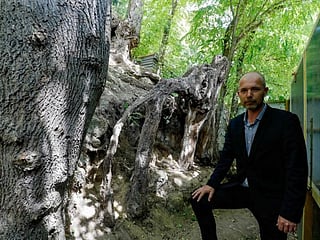UAE gold shoppers stayed well away in second quarter of 2020
Retailers offering straight discounts to convince shoppers gold is 'only game in town'

Also In This Package
Dubai: UAE’s gold and jewellery sales totaled a dismal 1.3 tonnes between April to end June, as a combination of COVID-19 and soaring prices forced shoppers to stay out.
The drop-off in demand becomes all the more clear when compared to the first three months of this year, when shoppers picked up 9.5 tonnes between January and end March as prices started to increase quite rapidly, according to World Gold Council data released early Thursday (July 30).
Since the COVID-19 outbreak, gold prices have put on 30 per cent and now looks quite likely to break the $2,000 an ounce level for the first time. It was earlier this week that gold shot past the earlier all-time high of $1,921 (set on September 6, 2011). On Thursday, gold’s ruling at $1,960 plus. The Dubai Gold Price early on Thursday is at Dh223.25 a gram.
“Not just that, gold prices in some key consuming markets (India, for instance) have risen more than the US dollar price because of local currency weakness,” said John Mulligan, Head of Member and Market Relations at London-based World Gold Council.
“When you get prices rising by over 30 per cent in half-a-year, and you have concerns over your income, it’s always going to hit jewellery sales. That’s where we are now. Demand will probably be depressed for the remainder of the year.”
Worldwide, jewellery demand nearly halved to 572 tonnes in the first six months. In India, the decline in demand was a crippling 74 per cent year-on-year, to total 44 tonnes. This is the lowest quarterly tally ever for that market, according to WGC data.
“It’s difficult to say with any conviction how high gold could go this time,” said Cyriac Varghese, General Manager at Sky Jewellery. “But what is unlikely is gold to suddenly drop off from these $1,900 levels suddenly. For that to happen, the global economy needs to be performing much better than it has. And possibly, finding a vaccine for COVID-19 could be the other trigger for gold to cool down.”
Keep convincing them
After that horrific first-half demand evaporation, leading jewellery retailers in the UAE are reinforcing one message to keep consumers interested – that gold is the only asset to have risen during what has been an extremely troubling period for the global economy.
In dirham terms, the Dubai Gold Price was at Dh161.75 a gram on July 27, 2019, and was at Dh219.75 a year later. “That’s a straight 36 per cent gain in just 12 months,” according to Shamlal Ahmed, Director at Malabar Gold & Diamonds. “Gold remains a good safeguard against both inflation and currency fluctuations. Jewellery designs will keep changing from time to time but the underlying asset’s value won’t.”
It can take on pandemics
“Gold has remained one of the few assets that proved it can withstand any calamity - including pandemics,” said Dimple Jethwani, Partner at Meena Jewellers. “We have been encouraging customers over the past few years to invest in gold.
“It is immediately encashable, which again proves its reliability in trying times.”
Straight ‘discounts’
And for the first time, UAE jewellery retailers are offering straight discounts on their gold collections, and not just limiting their offers to dropping making charges or having exchange schemes. These discounts will extend all the way to September.
“These offers will have to continue if we want to build sales back to pre-COVID-19 levels,” said Dimple. “All industries have seen a huge and unprecedented fall in sales. [Jewellery] retailers are giving genuine discounts on making charges and completely slashing their profit margins to encourage sales. The customers will ultimately benefit.”
Will these prices continue?
Everyone in the gold business and market watchers agree that touching $2,000 an ounce is doable in this current run. But with prices at these levels, won’t there be a sentiment among global institutional buyers to start selling their holdings?
And if that happens, won’t prices come back to Earth?
Mulligan doesn’t quite see it happening that way. “Central banks in some nations facing extreme duress may see it as an ‘asset of last resort’,” he said. “But I would think they will get better value from having gold at these levels than lower. Selling off would undermine their assets.
“In our conversations with central banks, no one has come out and said they plan to engage in selling. We will see the odd pockets of selling happen somewhere, but not as a general trend.
“As for institutional buyers [such as funds], you will always see some profit-taking – it’s inevitable. But even that level of immediate profit-taking, I don’t see it happening in these conditions. Gold is the only asset game in town now.”
Keep waiting for those buyers
With every peak in gold prices, there are a few brave buyers who still want to come in. Varghese talks about a buyer who picked up 5 kilos of 24K when gold was at $1,850 an ounce – in 2011.
“It’s been some wait… but the buyer finally has the chance to make a profitable exit,” he said. “There was another buyer who came in when gold was at Dh224 for 24K - which was the previous all-time high (in September 2011). These are not just one-off buyers. There are many who remain convinced that they can never go wrong with a gold buy.”
For UAE jewellery retailers, their hope for a turnaround from the second-quarter disaster is built around such buyers. They will be waiting for them to make an entry through their showroom doors… soon.
"It always makes sense to invest in gold at any level - there might be corrections, but the long-term view of gold is $2,200 or higher," said Dimple.
Sign up for the Daily Briefing
Get the latest news and updates straight to your inbox









